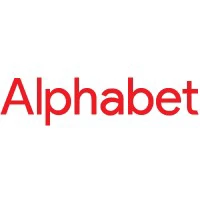Investing in Figma isn't possible at the moment since the company is privately held and has no imminent plans for an initial public offering (IPO). Therefore, retail investors interested in the design sector will need to consider alternative investment options, such as Adobe Inc. (NASDAQ: ADBE) and Autodesk, Inc. (NASDAQ: ADSK).
Shortly about ADBE and ADSK Stocks:

Autodesk, Inc. (NASDAQ: ADSK), headquartered in San Rafael, California, is a global provider of 3D design, engineering, and entertainment software and services. Founded in 1982, the company offers a comprehensive suite of tools including:
- AutoCAD: Software for professional design, drafting, detailing, and visualization.
- AutoCAD Civil 3D: A solution for civil engineering projects such as land development, transportation, and environmental projects.
- BIM 360: A cloud-based construction management software.
- Industry Collections: Tools for professionals in architecture, engineering, construction, product design, manufacturing, and media and entertainment.
- Inventor: Tools for 3D mechanical design, simulation, analysis, tooling, visualization, and documentation.
- Vault: Data management software to centralize data, accelerate design processes, and streamline collaboration.
- Maya and 3ds Max: Software for 3D modeling, animation, effects, rendering, and compositing.
Autodesk sells its products and services directly to customers as well as through a network of resellers and distributors.
| Market Cap | 46.603B |
| P/E Ratio | 51.09 |
| Beta | 1.45 |
| Sales | 5.45B |
| Income | 906.00M |

Adobe Inc.(NASDAQ: ADBE), headquartered in San Jose, California, is a diversified software company operating globally through three main segments: Digital Media, Digital Experience, and Publishing and Advertising. Founded in 1982 and originally known as Adobe Systems Incorporated, the company changed its name to Adobe Inc. in October 2018.
Key offerings include:
- Digital Media: Provides products and services that enable content creation, publishing, and promotion, featuring Creative Cloud, a subscription service offering access to Adobe's creative products.
- Digital Experience: Offers an integrated platform and applications for brands and businesses to manage and optimize customer experiences from analytics to commerce.
- Publishing and Advertising: Includes e-learning solutions, technical document publishing, web conferencing, document and forms platforms, web application development, high-end printing, and Advertising Cloud offerings.
Adobe sells its products and services directly to enterprise customers through its sales force and local field offices, and to end users via app stores and its website, adobe.com. It also distributes through a network of distributors, value-added resellers, systems integrators, software vendors and developers, retailers, and original equipment manufacturers.
| Market Cap | 204.198B |
| P/E Ratio | 43.01 |
| Beta | 1.28 |
| Sales | 19.92B |
| Income | 4.80B |
Step-by-Step Guide to Investing in Design Company Stocks:
After identifying a suitable alternative to Figma for investment, you can begin placing trades by following these simple steps:
Step 1: Open A Brokerage Account
To start investing, you will need a brokerage account. There are many brokerage companies on the market. However, they differ in the broker's commission, the number of markets available for investing, the complexity of the platform, and the ease of opening an account.
A brokerage account is an investment account that allows you to buy and sell a variety of investments, such as stocks, bonds, mutual funds, and ETFs.
To make the right choice, you should compare the fees, conditions, and how easily you understand the platform and the brokerage company's concept.
In the beginning, you can try our pick for the online broker, which we made after various tests this year.
Using eToro as an example, we will show how you can open such an account:
- Register your account here. Registration is free, after it, it is not necessary to start investing immediately. You can first use this account to practice with a virtual portfolio eToro demo account.
- Provide your personal details, such as your name, email address, and a password for your account.
- Verify your email address by clicking on the link sent to you in an email from eToro.
- Enter additional information, including your date of birth, address, and phone number.
- Upload a copy of your government-issued ID (such as a passport or driver's license) and a proof of address (such as a utility bill or bank statement) to verify your identity.
- Fund your account using a variety of payment methods, such as credit/debit cards, bank transfer, or e-wallets.

Step 2: Make Your Research
After deciding where to buy such stocks, the next step is researching the company.
This step is necessary to understand whether this company fits your financial goals and strategy. For such research to give good results, following questions should be considered:
- What is the company's history, and how has it performed in the past?
- What are the risks associated with investing in the company?
- How does the company compare to its competitors?
- What is the company's strategy for growth?
To find answers, check the company's annual and quarterly reports, balance sheets, income statements. Its website and third-party evaluators for the comprehensive analysis.
There are several key financials that you should know to make informed investment decisions:
| Revenue | Revenue is the total amount of money a company generates from its operations. It is an essential measure of a company's size and growth potential. |
| Net Income | Net income is a company's profit after all expenses have been deducted from its revenue. This is a good indicator of a company's profitability. |
| Earnings Per Share (EPS) | EPS is the amount of a company's profit that is allocated to each outstanding share of stock. It measures a company's profitability and can be used to calculate the P/E ratio. |
| Debt-to-Equity Ratio | The debt-to-equity ratio indicates a company's leverage, or how much debt it has relative to its equity. It is calculated by dividing the company's total liabilities by its total equity. A high debt-to-equity ratio may indicate that a company is taking on too much debt and could be at risk of defaulting on its loans. |
| Return on Equity (ROE) | ROE measures how much profit a company generates for each dollar of shareholder equity. It is calculated by dividing the company's net income by its total equity. A high ROE may indicate that a company uses its shareholders' money efficiently. |
| Price-to-Earnings Ratio (P/E Ratio) | The P/E ratio is a measure of a company's current stock price relative to its earnings per share (EPS). It is calculated by dividing the current stock price by the EPS. A high P/E ratio may indicate that the stock is overvalued, while a low P/E ratio may indicate that the stock is undervalued. |
Be sure to review analysts' opinions on the company, but keep in mind that predicting the exact future price is impossible due to numerous factors.
Additionally, stay updated by regularly reading the latest news and considering the perspectives of other investors.
Step 3. Determine How Much You Want to Invest and What Your Risk Tolerance Is
Before you choose the investment amount and frequency of contributions, it's essential to ensure that you have:
- An emergency fund that can cover 3-6 months of living expenses.
- A budget for your investing strategy.
It is vital to be ready emotionally as well. A "cold head" is the best helper.
To understand how much you want to invest, you must analyse your financial possibilities:
Time Horizon: The period an investor plans to hold an investment, which can be short-term (less than a year), medium-term (1-5 years), or long-term (over 5 years). It impacts risk tolerance and expected returns.
Risk Tolerance: The level of risk an investor is willing to take, influenced by financial situation, investment goals, and personal preferences. Some seek higher returns with more risk, while others prefer lower-risk investments to preserve capital. More about risk assessment >>
Goals: Specific objectives an investor aims to achieve, such as building wealth, generating income, preserving capital, or meeting financial plans like saving for retirement or funding education. Clear goals guide better decisions and effective strategies.
Step 4: Place Your Trade
Once you've decided how much to invest in your chosen company's shares, you can place your order:
Market Order: Buys or sells stocks at the current market price, typically executed quickly.
Limit Order: Buys or sells stocks at a specified price or better, providing more price control but may not execute if the price isn't reached.
Choose the order type based on your investment strategy, risk tolerance, and goals. Consider market conditions and stock volatility before placing your order.
Step 5. Monitor Your Investment Regularly and Set a Stop-loss
Regular monitoring allows you to stay informed about performance and make necessary adjustments, while a stop-loss order helps limit losses by automatically selling a stock if it falls below a certain price.
Avoid overreacting to short-term market fluctuations, as the stock market can be volatile with short-term dips before rebounding.
Regularly review your investment strategy to ensure it aligns with your goals and risk tolerance, adjusting as needed to meet your needs. Understanding potential risks is crucial for informed decision-making.
Market risk involves general market movements affecting investment values, credit risk pertains to the issuer's ability to make payments, liquidity risk relates to the ease of buying or selling investments, and diversification risk involves balancing the spread of investments. Emotional and behavioral risks can lead to impulsive decisions, and company-specific risk is the potential for individual companies to face challenges affecting stock value.
Diversify within your portfolio to mitigate these risks effectively.








